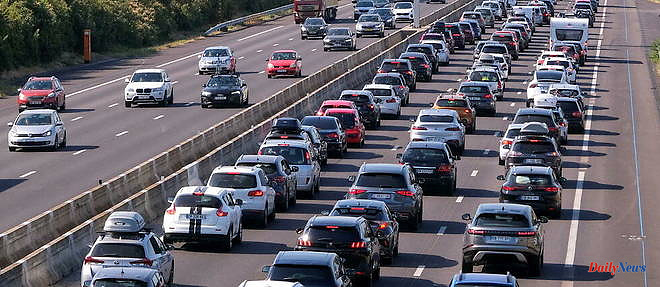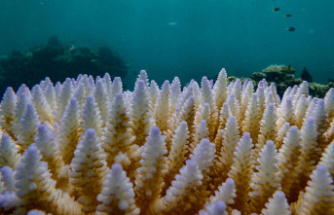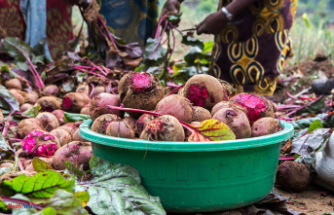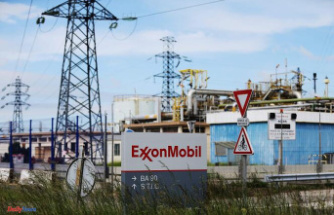Transport, building, agriculture, industry, heating... Before the National Council for Ecological Transition (CNTE), Prime Minister Élisabeth Borne unveiled an "action plan" on Monday to accelerate the ecological transition in France. The country must reduce its greenhouse gas (GHG) emissions by 55% by 2030, in order to comply with the target set by the European Union for two years. In 2022, France emitted 408 million tonnes of CO2 equivalent, 10 million tonnes or 2.5% less than the previous year.
The editorial staff of Le Point reviews the contribution of the various sectors to French GHG emissions.
According to the latest Secten report from the Interprofessional Technical Center for the Study of Atmospheric Pollution (Citepa), published in June 2022, the transport sector is the one that emits the most greenhouse gases in France. In 2021, it alone accounted for almost a third of the country's GHGs (30%), according to this benchmark report, which details greenhouse gas and air pollutant emissions in France, sector by sector. , since 1990. Citepa estimates focus on "territorial" emissions. They should therefore be distinguished from the carbon footprint, which takes into account imports and excludes exports.
Transport emissions come mainly from individual cars, specifies the government portal notre-environnement. In 2021, these accounted for 53% of the sector's GHG emissions, or 15.9% of national GHG emissions. Heavy goods vehicles, including buses and coaches, accounted for 27% of sector emissions (8.1% of national emissions), light commercial vehicles (LCVs) for 15% (4.5% of national emissions), and the air sector (domestic flights) for 3% (0.9% of national emissions).
Second most polluting sector in France according to Citepa estimates: agriculture, tied with manufacturing industry. These two sectors are each responsible for 19% of the country's GHG emissions. Most GHG emissions from agriculture are made up of methane (46%, or 8.7% of national emissions), mainly linked to livestock farming, and nitrous oxide (40%, or 7.6 % of national emissions), mainly linked to the fertilization of crops. Emissions related to energy consumption (machines, engines and boilers) represent 13% of the sector.
Buildings account for 18% of French emissions in 2021. Emissions from this sector are dominated by combustion devices, air conditioning, commercial refrigeration or the use of solvents, according to Citepa. They are very dependent on climatic conditions. The main levers for reducing emissions from this sector are the energy renovation of buildings and the choice of the type of energy used, says the association.
The energy industry sector represents 10% of French emissions. This includes emissions from energy production (power plants, heat generation, waste incineration with energy recovery), emissions from energy transformation (refineries, transformation of solid mineral fuels) and mining and energy distribution (oil, natural gas, coal), lists the Technical Interprofessional Center for the Study of Air Pollution.
Finally, the waste sector, which mainly includes the treatment of solid waste as well as the treatment and discharge of domestic and industrial wastewater, accounted for 3.7% of total GHG emissions in France in 2020.
Note that the LULUCF (Land Use, Land Use Change and Forest) sector, which absorbs CO₂ through plant photosynthesis, offset 3.6% of emissions from other sectors in 2020 .
Regarding the evolution of emissions sector by sector, the industry sector is the one that has decarbonized the most over the past thirty years. While total CO₂ equivalent emissions in France fell by 23% between 1990 and 2021, according to Citepa estimates, those of the industrial sector fell by 46%. Next is the energy industry, whose GHG emissions fell by 44% over the same period. The sector's contribution to total French emissions has thus fallen from 14% in 1990 to 10% in 2021.
Agriculture has seen its emissions drop by 12%, driven by the reduction in the size of the cattle herd (fewer but more productive animals) and the drop in nitrogen fertilization in cultivation. As for buildings and residential and tertiary activities, Citepa highlights a relatively stable pace of GHG emissions, then a significant drop since 2017. Finally, emissions from the transport sector have stagnated since 1990, according to the Secten 2022 report. Citepa is due to publish the 2023 edition of its annual report next June.












